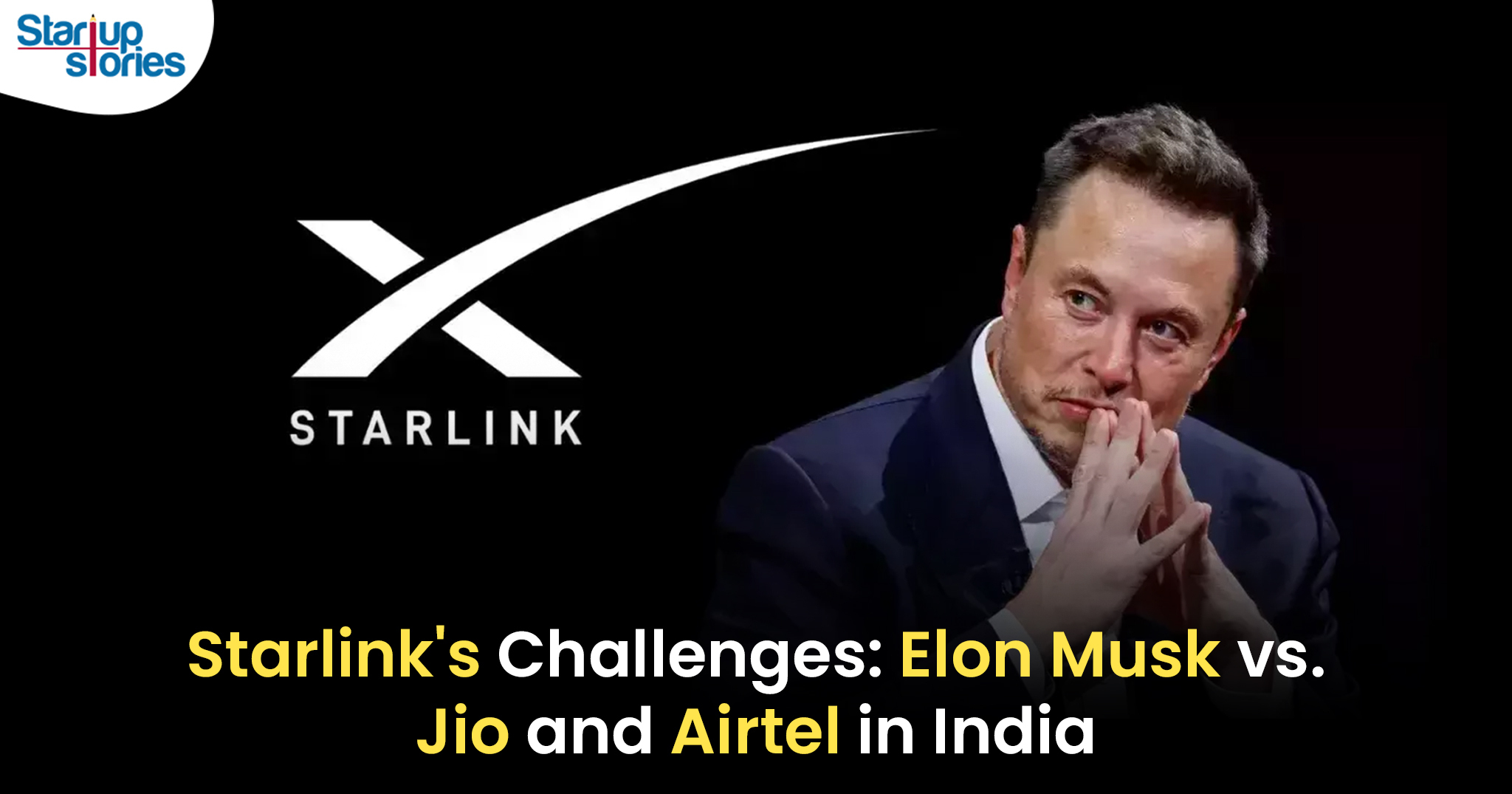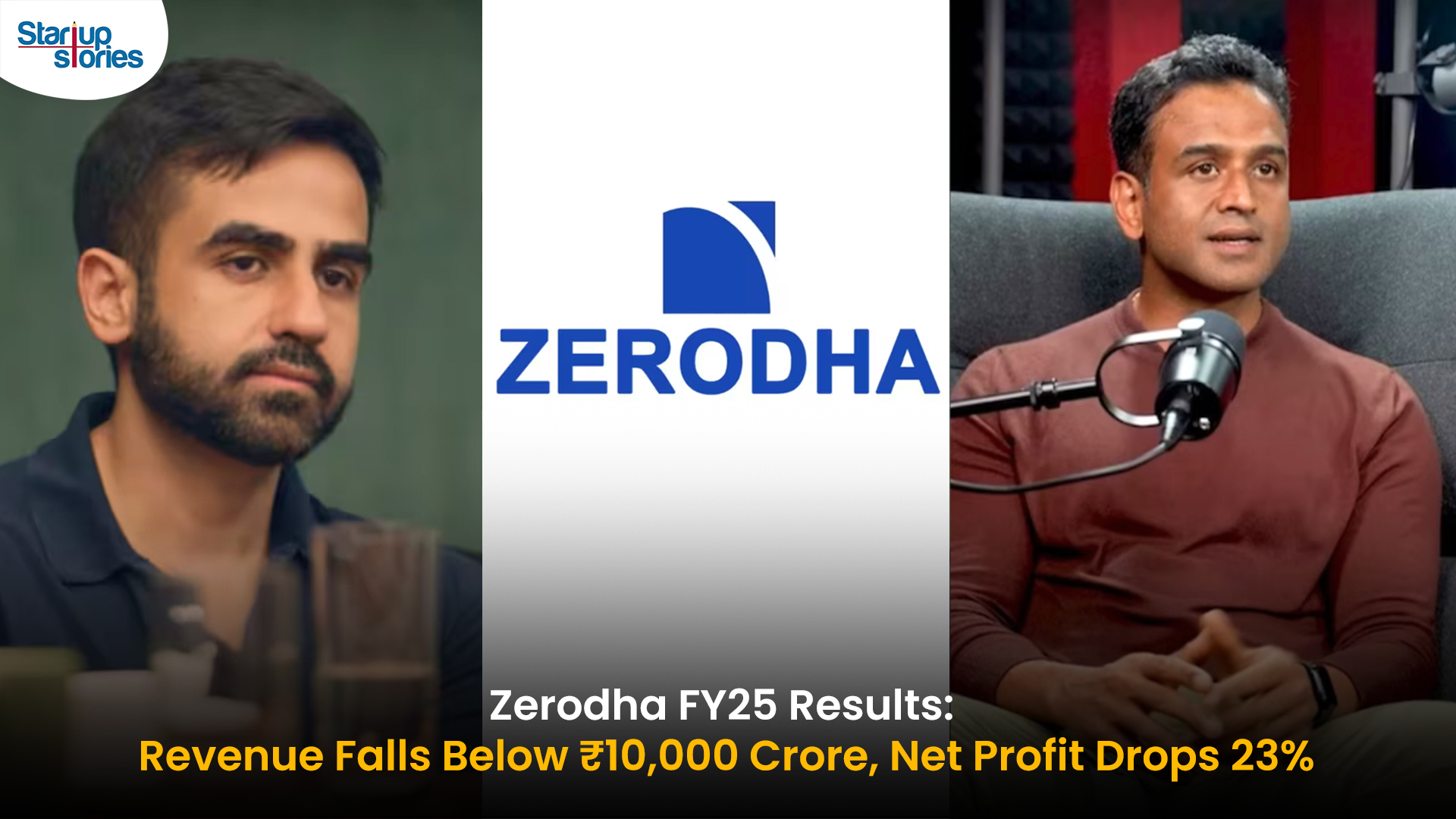Latest News
Elon Musk vs. Reliance Jio vs. Airtel: The Satellite Internet Debate in India!

Elon Musk’s satellite internet initiative, Starlink, may be creating a buzz internationally, but in India, it has yet to evoke significant concern among competitors. Several factors contribute to this scenario, including regulatory challenges, pricing dynamics, and the distinct characteristics of India’s rural market.
Pricing Challenges
One of the primary obstacles for Starlink is its pricing. While Starlink’s service is priced at a premium in other countries, its cost becomes considerably less appealing when converted to Indian rupees. The starting monthly plan for Starlink is approximately $50 (around ₹4,200). In contrast, local alternatives like Airtel Xstream Fiber begin at ₹499 (excluding taxes), and Reliance JioFiber starts at ₹399 (excluding taxes).
Given that India offers some of the most affordable internet rates globally—especially with the rapid rollout of 5G services by Reliance Jio and Bharti Airtel—rural consumers, who are Starlink’s target audience, are unlikely to opt for pricier satellite internet options when cheaper alternatives are readily available.
Cost Comparisons
In addition to monthly fees, potential customers must consider the initial setup costs. Reports suggest that equipment for Starlink could cost around ₹37,400, adding to the overall expense for users. This upfront cost further diminishes the appeal of Starlink compared to local providers who offer lower entry barriers.
Regulatory Hurdles
Navigating regulatory requirements poses another challenge for Starlink. The company has encountered difficulties in adapting to India’s licensing framework. Unlike other countries where satellite communication spectrum allocation often follows administrative guidelines, India’s telecom regulations mandate a Unified Access Service Licence (UASL) for any communication service.
UASL Requirements
The UASL is a comprehensive licence that allows service providers to offer various telecommunications services—including voice, data, and satellite communications—under one umbrella. This requirement aims to ensure compliance with specific rollout obligations, quality standards, and government revenue contributions through licence fees, creating a significant barrier for Starlink’s entry and rapid service rollout.
Market Density and Competition
Although there is a pressing need for improved connectivity in rural India, the market’s density complicates the case for costly satellite internet services. Unlike sparsely populated regions abroad where Starlink thrives, rural India often has dense populations that make expensive satellite-based internet services less compelling. The cost-to-benefit ratio does not favor satellite internet when affordable 5G services are rapidly expanding.
Evolving Competitive Landscape
The competitive landscape among India’s telecom players has also evolved, with Bharti Airtel and Reliance Jio finding common ground regarding spectrum allocation despite their historical rivalry. Reliance Jio, led by Mukesh Ambani, advocates for a comprehensive auction of satellite spectrum to ensure fair competition among providers catering to urban customers. Conversely, Bharti Airtel, under Sunil Mittal’s leadership, supports an administrative approach while aligning with the telecom minister’s preference for regulated pricing mechanisms.
Existing Foothold of Competitors
Airtel has already established itself in the satcom service space through its partnership with OneWeb, providing satellite-based internet services and developing ground stations in states like Gujarat and Tamil Nadu. This existing presence lessens Airtel’s apprehension toward Starlink, especially considering the complexities Musk’s company faces in gaining traction in the Indian market.
Government Relations and Future Prospects
Musk has expressed support for the Indian government’s decision to allocate satellite spectrum administratively rather than through an auction. He praised this move as consistent with international practices but acknowledged that practical challenges continue to loom over Starlink’s entry into India.
Conclusion
The current market landscape suggests that Elon Musk’s Starlink does not pose an immediate threat to Indian telecom giants. Regulatory barriers, pricing issues, and the competitive advantage held by local companies indicate that Starlink’s journey in India will likely be fraught with challenges. With Airtel and Jio presenting a united front and receiving support from the telecom minister, the satellite internet space in India remains a difficult arena for newcomers—including Musk’s high-profile venture.
As both established players strengthen their positions and adapt to emerging technologies like 5G and satellite communications, Starlink will need to navigate these complexities carefully if it hopes to make a significant impact on the Indian market.
Latest News
Zerodha Reports 23% Profit Decline in FY25 as Revenues Miss Target

Zerodha experienced a challenging FY25, as its revenue fell 11.5% to ₹8,847 crore and net profit dropped 22.9% to ₹4,237 crore. This decline reflects tougher regulatory conditions, lower trading volumes, and increased operational costs in the brokerage market, all of which impacted core earning segments for the company.
Despite these headwinds, Zerodha improved its operating margin to 63.78% and built up significant cash reserves, reporting ₹22,679 crore in bank balances. Salary expenses and director remuneration increased, but disciplined cost controls helped the company maintain profitability and a debt-free balance sheet. The drop in active clients and increased compliance costs further contributed to the profit contraction.
Looking ahead, Zerodha’s resilience is supported by its robust cash position and operational efficiency. Maintaining steady margins, diversifying product offerings, and investing in technology positions the company to withstand future regulatory fluctuations and changing market sentiment reinforcing its status as one of India’s leading brokerage firms.
Latest News
Zoho Pay Debuts as India’s New UPI Challenger, Taking on PhonePe, Paytm, and Google Pay

Zoho Corporation has expanded its fintech portfolio with the launch of Zoho Pay, a UPI-based payments app built to challenge India’s top digital payment giants such as PhonePe, Paytm, and Google Pay. The new app supports peer-to-peer transfers, bill payments, QR-based transactions, and merchant settlements in a streamlined interface. Available as both a standalone app and an integrated feature inside Zoho’s privacy-driven messenger Arattai, Zoho Pay enables users to handle chats and payments in one platform, emphasizing data privacy and Made-in-India innovation.
Through seamless integration with Arattai, Zoho Pay allows users to send or request payments, split expenses, and conduct UPI-based transactions directly in their chat windows. Users can link bank accounts, scan dynamic QR codes, and receive audio confirmations of payments, ensuring speed and security. This design mirrors the simplicity of India’s leading UPI apps but is powered by Zoho’s non-advertising, privacy-first model. The integration aligns with Zoho’s mission to build a self-reliant digital ecosystem, where messaging and money management coexist securely.
In the competitive digital payments market, Zoho Pay differentiates itself through its tight business software integration with apps like Zoho Books, Zoho Payroll, and Zoho Commerce, offering small businesses unified access to payments, billing, and accounting. The company is also expanding its reach with POS devices for merchants featuring UPI QR, card payments, and instant reconciliation tools. With founder Sridhar Vembu’s vision of a ‘Chat + Pay’ ecosystem, Zoho Pay reflects a bold step toward redefining India’s fintech scene with a secure, ad-free, and locally developed alternative to global payment platforms.
Latest News
Meta Expands AI-Powered Reels Translation to Hindi and Portuguese, Enhancing Global Creator Reach

Meta has expanded its AI-powered translation feature for Reels to include Hindi and Portuguese, joining English and Spanish in empowering creators to reach a broader global audience on Instagram and Facebook. Originally launched in August 2025 with support for English and Spanish, this update now allows creators to seamlessly translate and dub their short videos, breaking language barriers across some of the largest Reels markets worldwide. The AI technology mimics the creator’s voice tone and even offers lip-syncing to ensure the translated videos feel natural and engaging for viewers.
This enhancement is especially significant for India, the largest market for Facebook and Instagram, where over 600 million people speak Hindi. Content creators who are not fluent in Hindi can now easily access this vast audience, increasing their reach and engagement across diverse linguistic groups. To maintain transparency, all translated Reels are clearly labeled with “Translated with Meta AI,” and viewers can choose to switch translations on or off based on their preference.
In addition to voice dubbing, Meta is developing features to translate captions and text stickers on Reels, making content more accessible even without sound. These AI translation tools are available free for eligible public Instagram accounts and Facebook creator profiles with over 1,000 followers. This innovation reinforces Meta’s commitment to fostering cross-cultural content sharing and enhancing creators’ ability to connect with audiences around the world through short-form videos.











Reuben Laubach
April 15, 2025 at 2:15 am
Nice read, I just passed this onto a colleague who was doing a little research on that. And he actually bought me lunch as I found it for him smile Therefore let me rephrase that: Thanks for lunch!
herramienta de enlaces
April 23, 2025 at 8:54 pm
I really like your writing style, superb information, thankyou for putting up : D.
Aubrey Garman
May 2, 2025 at 10:03 pm
I reckon something really special in this website.
Qeugexag
May 26, 2025 at 7:53 pm
Explore the ranked best online casinos of 2025. Compare bonuses, game selections, and trustworthiness of top platforms for secure and rewarding gameplaycasino slot machine.
Elsa Waltersdorf
June 1, 2025 at 11:24 pm
It?¦s in point of fact a great and useful piece of information. I am happy that you simply shared this helpful info with us. Please stay us informed like this. Thanks for sharing.
hkp5b
June 7, 2025 at 5:07 am
how can i get clomid buying clomiphene price can i buy clomiphene price clomid price uk can i order clomid without insurance where buy clomid without dr prescription clomiphene rx for men
Leadership Development
June 11, 2025 at 12:46 am
Everything is very open and very clear explanation of issues. was truly information. Your website is very useful. Thanks for sharing.
Tiera Boulet
July 1, 2025 at 3:59 am
An impressive share, I just given this onto a colleague who was doing a little analysis on this. And he in fact bought me breakfast because I found it for him.. smile. So let me reword that: Thnx for the treat! But yeah Thnkx for spending the time to discuss this, I feel strongly about it and love reading more on this topic. If possible, as you become expertise, would you mind updating your blog with more details? It is highly helpful for me. Big thumb up for this blog post!
www.binance.com注册
July 7, 2025 at 4:28 am
Thank you, your article surprised me, there is such an excellent point of view. Thank you for sharing, I learned a lot. http://gala-tv-nerede.cryptostarthome.com
Hawaii medical malpractice lawyer
July 24, 2025 at 7:27 am
My spouse and I stumbled over here by a different web page and thought I should check things out. I like what I see so now i am following you. Look forward to finding out about your web page yet again.
10minute plays
July 30, 2025 at 12:53 am
I was wondering if you ever thought of changing the page layout of your site? Its very well written; I love what youve got to say. But maybe you could a little more in the way of content so people could connect with it better. Youve got an awful lot of text for only having 1 or 2 pictures. Maybe you could space it out better?
computer cabling near me san antonio tx
July 30, 2025 at 3:01 am
Having read this I thought it was very informative. I appreciate you taking the time and effort to put this article together. I once again find myself spending way to much time both reading and commenting. But so what, it was still worth it!
Recycled cloth
July 30, 2025 at 10:22 pm
Super-Duper site! I am loving it!! Will come back again. I am taking your feeds also.
Grand Prairie ac repair
August 6, 2025 at 3:36 pm
Thank you for the sensible critique. Me and my neighbor were just preparing to do some research on this. We got a grab a book from our area library but I think I learned more from this post. I am very glad to see such fantastic information being shared freely out there.
bandar togel
August 18, 2025 at 3:31 pm
Hey there, You’ve done a fantastic job. I’ll definitely digg it and personally suggest to my friends. I’m sure they will be benefited from this website.
prediksi togel macau
August 18, 2025 at 5:53 pm
Great paintings! This is the kind of info that should be shared across the web. Disgrace on Google for now not positioning this publish upper! Come on over and consult with my web site . Thank you =)
slot5000
August 19, 2025 at 4:36 am
you could have a terrific blog right here! would you like to make some invite posts on my weblog?
ayuda PFG arquitectura
August 24, 2025 at 10:06 pm
Of course, what a magnificent website and instructive posts, I will bookmark your site.Have an awsome day!
Xerjoff perfumes
September 20, 2025 at 7:38 am
Great article and straight to the point. I am not sure if this is actually the best place to ask but do you guys have any thoughts on where to employ some professional writers? Thx 🙂
Annita Karathanasis
November 2, 2025 at 11:24 pm
I?¦ll right away take hold of your rss as I can’t in finding your email subscription hyperlink or newsletter service. Do you have any? Kindly let me understand so that I could subscribe. Thanks.
iwin
November 6, 2025 at 3:04 am
iwin – nền tảng game bài đổi thưởng uy tín, nơi bạn có thể thử vận may và tận hưởng nhiều tựa game hấp
Kuwin
November 6, 2025 at 7:43 am
kuwin sở hữu kho game đa dạng từ slot đến trò chơi bài đổi thưởng, mang đến cho bạn những giây phút giải trí tuyệt vời.
站群程序
November 9, 2025 at 9:55 pm
搭载智能站群程序,自动化搭建与管理,为SEO项目提供核心驱动力。站群程序
谷歌站群
November 13, 2025 at 11:01 am
专业构建与管理谷歌站群网络,助力品牌实现全域流量的强势增长。谷歌站群
J88
November 13, 2025 at 5:00 pm
Đến với J88, bạn sẽ được trải nghiệm dịch vụ cá cược chuyên nghiệp cùng hàng ngàn sự kiện khuyến mãi độc quyền.
MM88
November 14, 2025 at 9:24 am
Khám phá thế giới giải trí trực tuyến đỉnh cao tại MM88, nơi mang đến những trải nghiệm cá cược thể thao và casino sống động.
Shannon Madler
November 16, 2025 at 1:35 am
I savour, cause I discovered exactly what I used to be looking for. You have ended my 4 day long hunt! God Bless you man. Have a nice day. Bye
GO88
November 20, 2025 at 6:30 am
Tham gia cộng đồng game thủ tại Go88 để trải nghiệm các trò chơi bài, poker phổ biến nhất hiện nay.
MM88
November 20, 2025 at 5:27 pm
Với giao diện mượt mà và ưu đãi hấp dẫn, MM88 là lựa chọn lý tưởng cho các tín đồ giải trí trực tuyến.
audifort
December 1, 2025 at 1:37 pm
Hiya, I am really glad I have found this information. Nowadays bloggers publish just about gossips and web and this is actually annoying. A good blog with exciting content, this is what I need. Thanks for keeping this web-site, I will be visiting it. Do you do newsletters? Can’t find it.
gelatin trick recipe
December 1, 2025 at 6:54 pm
Very good written information. It will be useful to everyone who employess it, including me. Keep up the good work – looking forward to more posts.